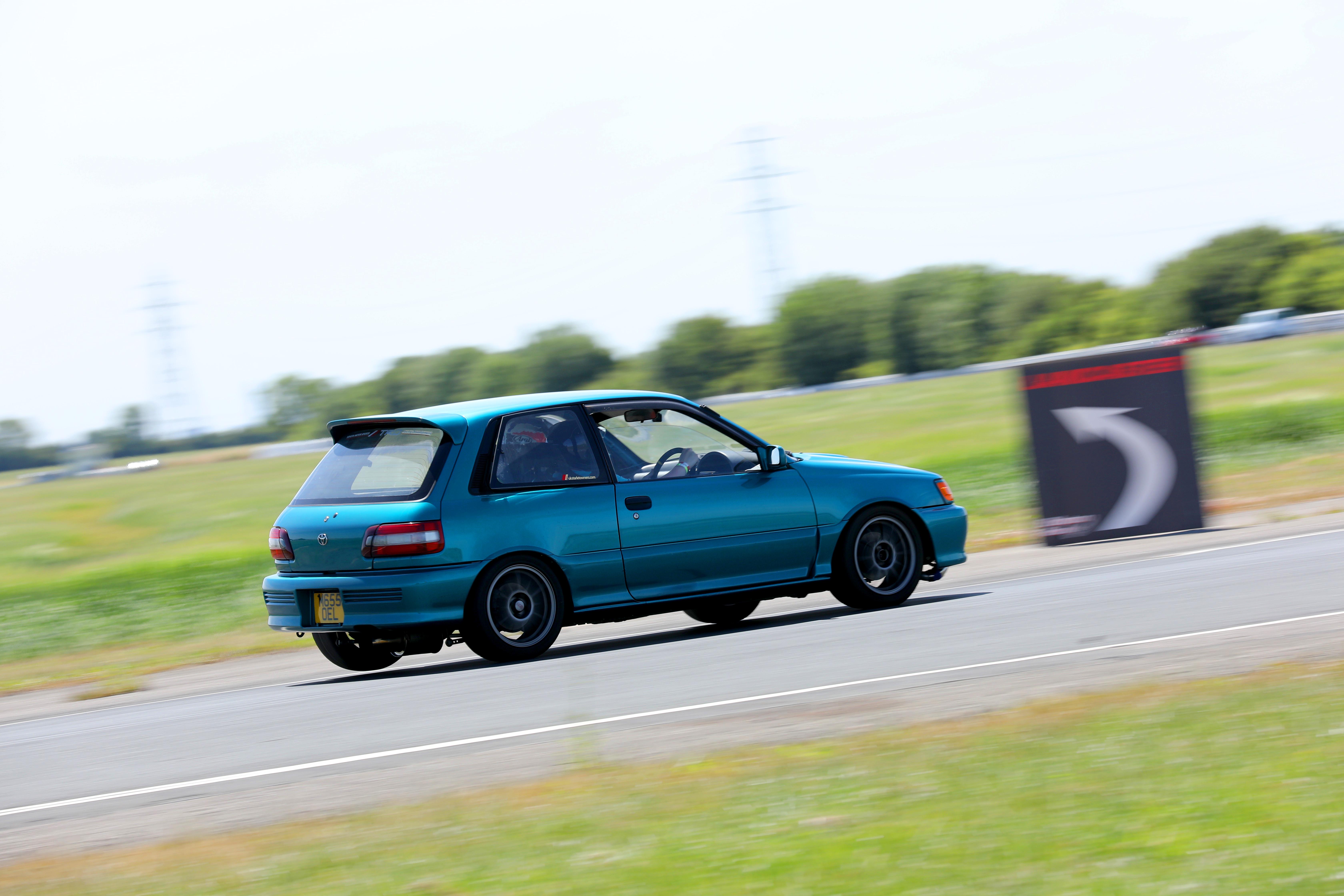-
Posts
9780 -
Joined
-
Last visited
Content Type
Profiles
Forums
Wiki
Media Demo
Events
Everything posted by Socks
-
Cheaper then wepr's hybrid kit? tbh tho, WEPR or Race-Tech swings and roundabouts... there the best kits out there imo... If you wana do it on the cheap, look at toyosports...
-
Link to TD04 Guide in Wiki Section: http://www.ukstarletclub.com/forums/index.php?app=ccs&module=pages§ion=pages&id=2&record=10 Tbh, Screamers are only loud when you are on full boost. The rest of the time the car sounds normal, believe me you want screamer noise in your life! Have a look at Race-Tech's turbo kits: http://www.race-tech.net/index.php?main_page=index&cPath=2_5 Cheapest kit and prolly the best out there imao! You get everything you need! They may be able to make u a custom kit that vents the screamer back into the exhaust however if you really dont want a screamer...
-
Like a bad smell you arent u!
-

The TD05'D Glanza *****stolen, now recovered*****
Socks replied to el_man's topic in EP91 Glanza Progress Blogs
Love it dude! Get it on youtube! Sounds very rawr! -
I agree with u.. I have better, but I have to be careful what I post on here... Too many local prying eyes!
-
Few old ones off my phone lol...
-
http://www.ukstarletclub.com/forums/index.php?app=ccs&module=pages§ion=pages&id=2&record=25 If anyone has any better pictures or more infomation on colour names, please speak out! This is a wiki, not a fact file! Enjoy People!
-
Im in then
- 107 replies
-
- Unicorn Inn
- 29th April 2012
-
(and 1 more)
Tagged with:
-

Glanza Silver Boot Lid w/Plate Surround & Spoiler
Socks replied to Socks's topic in Starlet Parts For Sale
Yes it is... bump! PM Sent -
Genuine TRD Airbag Steering Wheel Matey
-

Dave B Meet in Banzai's June Edition on sale 17th May :)
Socks replied to ro55ifumi's topic in Show Archives
any ideas which pics theyve used? Did they get all the pics off my server ok Jon? -
u massive perv! It had crossed my mind, Id have liked grid drifts, but iddy, lew & moorley have all done this now... I havent decided yet! Cheers anyways babe Phil, I used some 240grit sand paper and increased the size of the surround hole every so slightly, but otherwise yes is would forst the covers apart! Im half way thru a guide on fitting it yourself which ill plonk into the UKSC Wiki section in good time! Cheers Matey! x
-
Helpful for all the dumbass's out there
-
hehe, om nomnom!
-
Cheers Babe. Aye, not needed is it! Bit of a bitch to remove but lots more space behind dash now! Detailed the car this afternoon too, sort of a rule, clean car, photosesh
-
In that case im not coming
- 107 replies
-
- Unicorn Inn
- 29th April 2012
-
(and 1 more)
Tagged with:
-
Cheers chaps! Been battling with bloody hail! Lew. A td05 wud bolt straight on and would allow you to break into the 300's which is sweet fun!
-
About time for an update. Just been doing all the odds and ends on my to do list! First off.. Big Thanks to SiCaln, for sending me his Illuminated Ignition Barrel & Non-Smoking Ash Tray from Jeff.... I dont smoke so its handy, stops coins and things rattling in there! Which is good! Really Easy to Fit this actually, thought it was going to be a bitch! The barrel illuminates when the door is opened, when the door is shut it starts a 7second timer, which then fades the bulb out... Pretty cool, SiCaln provided me with detailed pics of how to patch it in, so I will be making a guide for future reference for others Lastly I did a job Ive needed to do for a long time and Id been putting off, which was removing the Air Conditioning Condensor from behind the Dashboard! Fuck, what an absolute bitch it was too! Part way thru, made more tricky for me by an E-Manage being in the way lol. However, I won that battle, and Im now condensor free! So thats another 2-3kg's gone! Also got rid of them 2 ugly pipes in the engine bay that used to connecto the the rest of the air con system under the hood. At a previous Scrap Yard Frape, I 'yoinked' a N/A Starlet non aircon blanking cover.... Nice and Tidy More to come too before Japfest people! ;)
-
1)Liam 2)Aaddzz123 3)Dringo Boi + dad 4)Michael 5)Starbo Moorley+ friend 6)Socks
- 107 replies
-
- Unicorn Inn
- 29th April 2012
-
(and 1 more)
Tagged with:
-

Josheyboy's GT 14/07/12 Farewell :(
Socks replied to Josh@TunerLifestyle's topic in EP80/EP82 Progress Blogs
Firewall looks loads better, needed that badly! Is the underside of your bonnet just as bad by any chance? usually are! -

New Wiki Entry - Glanza Colour Guide!
Socks replied to Socks's topic in News & General Announcements
Its only rare on a Glanza! No a UK... Thats maybe wat was confusing... -

New Wiki Entry - Glanza Colour Guide!
Socks replied to Socks's topic in News & General Announcements
its ultra-rare on a glanza mate, UK models its not so rare Thanks for the info tho, thats what a wiki is for, for people in the know how to share there info! Kudos for that! -
I'm in
- 107 replies
-
- Unicorn Inn
- 29th April 2012
-
(and 1 more)
Tagged with:
-
awww, jealousy is a terrible thing. Driving round in there 100bhp corsa sports I actually LOL'd at comments like.. That starlet no way has 340bhp - you sure you fucking expert? That Ferrari wasnt going for it - na, they sound like that when your slowing down do they? lol meh, lettem moan, more views on youtube it gets lol!
-
fuck that! he passed that bike at 160mph+ easy on the dirt!

